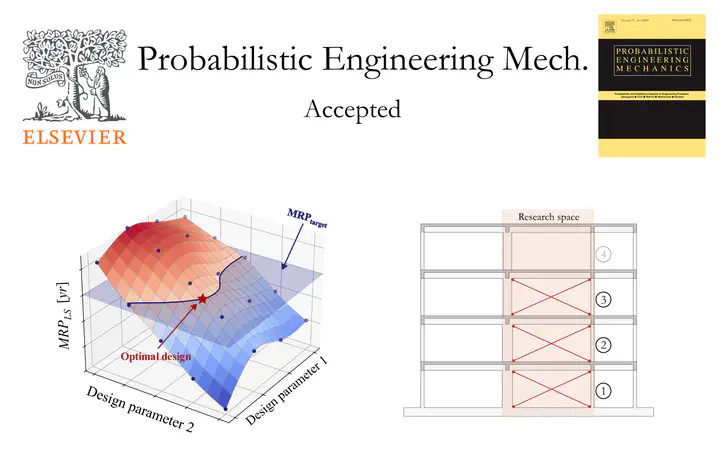Reliability-based seismic retrofitting design methodology for non-ductile reinforced concrete frame structures

Abstract
This study presents a comprehensive, reliability-based seismic retrofitting design methodology specifically tailored for non-ductile reinforced concrete frame structures. By leveraging the Performance-Based Earthquake Engineering (PBEE) framework, traditionally used for the seismic safety assessment of existing structures (e.g., buildings, bridges) and the seismic evaluation & design of new ones, this research extends its innovative application to the seismic retrofitting of older, non-code-compliant structures. The importance of this extension lies in the growing need to enhance the seismic resilience of aging infrastructure, which is critical for mitigating risks in earthquake-prone regions. The proposed methodology introduces a cost-effective approach that balances seismic performance, quantified by the Mean Return Period (MRP) of limit state exceedances, against retrofit costs. This approach helps identify optimal retrofit strategies that meet or exceed target MRPs at minimal costs, offering a practical solution to engineers and decision-makers. A key contribution of this research is the incorporation of collapse probability into the PBEE framework, providing a more comprehensive assessment of seismic risk. This is especially important for existing non-ductile structures, which are often more vulnerable due to inadequate seismic detailing. The methodology addresses these vulnerabilities, ensuring that retrofit strategies not only improve structural performance but also elevate the overall structural safety under seismic loads to the required level. The practical application and effectiveness of the proposed methodology are demonstrated through a detailed case study. The case study showcases a performance-based seismic retrofitting design that is both computationally efficient and accurate. The results validate the approach, underscoring its potential to transform current practices in the seismic retrofitting of non-ductile reinforced concrete frames. In conclusion, this study provides a comprehensive and robust framework for the seismic retrofitting of existing structures, balancing performance and cost. It contributes to the development of resilient infrastructure by offering a scientifically rigorous, economically viable, and practically implementable solution. This framework is poised to significantly impact the safety and resilience of aging buildings in earthquake-prone areas, promoting sustainable development and risk mitigation.
Publication process
- Sept. 2024 Under review
- Jul. 2025 Accepted